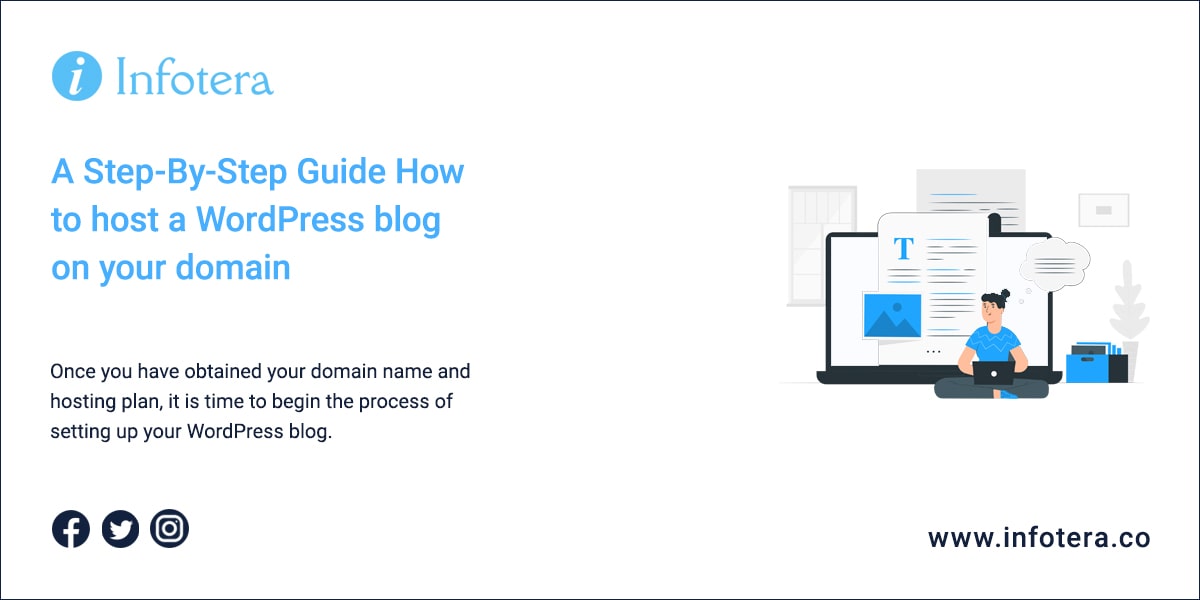Once you have obtained your domain name and hosting plan, it is time to begin the process of setting up your WordPress blog. Here is a step-by-step guide to get you started:
- Log into your hosting account’s control panel. This will be provided by your web host when you sign up for a hosting plan.
- Look for the option to install WordPress. Most hosting companies provide an easy way to do this and will offer a one-click installation, so you won’t have to mess around with any technical stuff.
- Once WordPress is installed, log into the back-end of your website using the username and password provided. This will take you to the WordPress dashboard.
- In the left-hand column, you’ll see a link for ‘Settings’. Click on this link and provide all of the required fields such as your blog title, email address and time zone.
- Now go to ‘Appearance’ in the left-hand column and choose a theme for your blog. Once you have chosen the one that best suits your needs, click ‘Save and Activate’.
- Now it’s time to create content. To do this, simply go to ‘Posts’ in the left-hand column and select ‘Add New’ to begin writing a new post.
- Once you have created several posts, it’s time to promote your blog. There are several ways to do this, the most popular of which includes social media and search engine optimization (SEO).
- Finally, make sure to keep your WordPress site updated with new content regularly. This will increase traffic to your site and help your blog to grow.
By following these steps, you should be able to successfully host your WordPress blog on your domain name.
How to change your domain’s name servers
Once you have registered your domain name and chosen a hosting plan, it is important to point your domain to the right nameservers so that it can begin pointing to your web host. To do this, you must first log into your domain registrar’s control panel and look for the option to change or edit the name servers.
Option 1: update name servers yourself
Once you have located the option to change your domain’s name servers, enter the nameservers provided by your web host. After this is done, save the changes and allow a few hours for them to take effect.
Option 2: ask your web host to update nameservers
If you are not comfortable changing name servers yourself, you can always ask your web host to do it for you. Most hosting companies offer this service and will take care of the whole process for you.
“I’d like to use my domain with a www.ironhosts.com site. In order to do that, I need to point my domain’s name server to the following:
ns1.infotera.co
ns2.infotera.co
ns3.infotera.co
Once the name servers have been updated, your domain should now be pointing to your hosting account and you are ready to install WordPress and get started on building your blog!
How to set up your connected domain as the primary site address
Once you have installed WordPress and created your blog, it is time to set up your connected domain as the primary site address. This can be done by logging into your WordPress dashboard and going to ‘Settings’ in the left-hand column. Here you should see an option for ‘General Settings’. Under this tab, you can enter your domain name in the ‘Site Address’ field.
What are the benefits of hosting a WordPress Blog on your own domain?
There are many benefits to hosting your WordPress blog on your own domain. First, it gives you a unique identity and branding opportunity. Secondly, it allows you to set up a custom domain name for your blog which is both easier for visitors to remember and more professional looking. Finally, it gives you full control over the look and feel of your blog and how it is presented to the public.
Professionalism
and credibility can also be greatly improved by hosting your blog on your own domain. This gives the impression that you are serious about your blogging business and can help to attract more readers and potential clients. Additionally, having a dedicated domain name makes it much easier for visitors to find you as they will not have to remember a long URL or subdomain address.
Discoverability
Search Engine Optimization is also an important factor when it comes to hosting your blog on your own domain. Having a unique domain name increases the chances of appearing in search engine results and makes it easier for people to find you online.
Overall, hosting a WordPress blog on your own domain has many advantages over the free version offered by WordPress.
Control
Finally, hosting a WordPress blog on your own domain gives you complete control over the look and feel of your blog. You can customize themes and plugins to fit your needs, add SEO tags for better search engine rankings, use Google Analytics to track website visits, and even make changes to the source code if you have the technical knowledge.
This allows you to truly make your blog unique and create a user experience that is tailored to your specific needs.
Whether it’s for personal or business use, hosting a WordPress blog on your own domain is an excellent way to build an online presence and attract more readers. By taking the time to properly set up your domain name and configure the necessary settings, you can ensure a seamless user experience and make your blog stand out from the competition.

